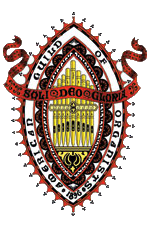Effective Sonic Balance Between Voice and Organ (Part 3)
Dear Dynamically, if I might address you by your first name,
Last month I promised to suggest some basic organ registrations for hymn playing, likely the most important feature of our role as church musicians. The sentiment of most hymn texts can be successfully conveyed by using five or more pistons set in a graduated series similar to the following suggestions. (Study the texts to discern which registration appears to be most appropriate.):
General 1 - All manuals: Principal 8’, with all manuals coupled at 8’
Pedal: Bourdon 16’, Spitzflöte 8’, with manuals coupled to pedal at 8’
General 2 – All manuals: Principal 8’ and 4’, with all manuals coupled at 8’
Pedal: Principal 16’ and 8’, with manuals coupled to pedal at 8’
General 3 – Great: Principal 8’, 4’, 2’ with Bourdon 16’; all manuals coupled at 8’
Swell: Principal 8’, 4’, 2’ with Nazard 2-2/3’, Oboe 8’ and Bourdon 16’
Choir: Principal 8’, 4’, 2’ with Nazard 2-2/3’, swell to choir
Pedal: Principal 16’, 8’, 4’ with manuals coupled to pedal at 8’
General 4 – All manuals: Add reeds 8’
Pedal: Add light reeds 16’ and 8’
General 5 – All manuals: Add reeds 4’ and mixtures
Pedal: Add Bourdon 32’
Notice that mixtures enter only in the final combination, to be used only with robust and confident congregational singing.
Additionally it is frequently helpful to play the hymn melody on a solo stop or combination of ranks to provide greater clarity and leadership for the congregation. To help the men in the congregation, it is most useful to build this solo melody at 16’ pitch level or to play the melody one octave lower on an 8’ rank, in the tenor range. Divisional pistons such as these may be employed to access solo combinations:
- foundation ranks at 16’ and 8’ pitch to accompany devotional texts;
- solo trumpet or tuba at 16’ pitch (or 8’ played in tenor range) to accompany more spirited texts; and
- solo cornet registration to vary the timbre of an interior stanza.
Obviously this brief survey is simply a beginning to the lifelong process of choosing registrations to encourage full congregational participation in hymn singing.
As William Cowper wrote: Sometimes a light surprises the Christian while he sings; it is the Lord, who rises with healing in His wings. I wish deep spiritual blessings for you and your congregation as you continue to explore the wealth of hymnody.
John Walker
